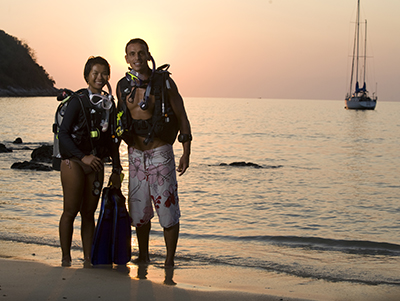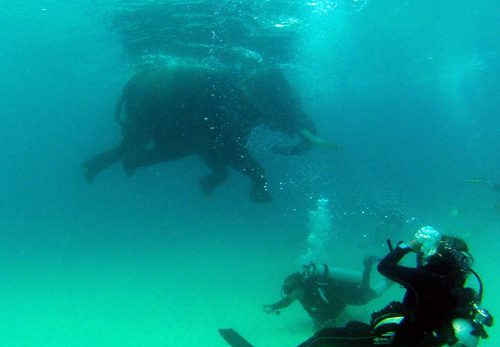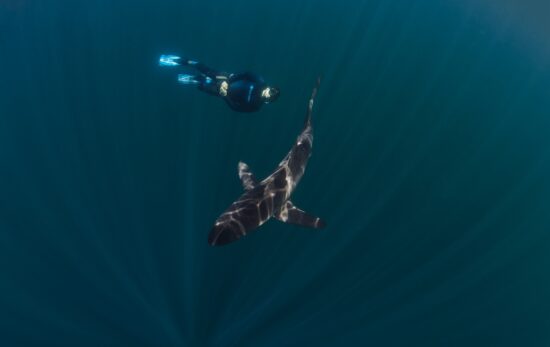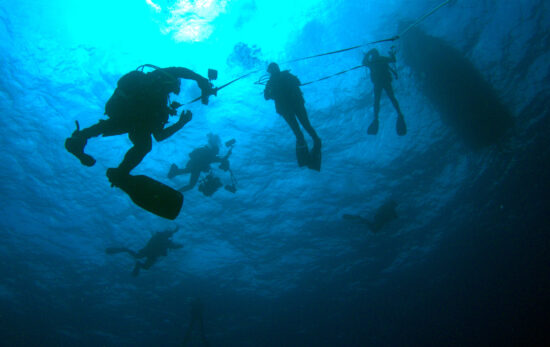Its often the case that we try new things by chance, and so it was with the OCEAN REEF full face mask (FFM) and integrated communications. Having completed my Tec Sidemount course and with a few dives left before I was needed in Sharm el Sheikh for the PADI Business Academy, I spotted two instructors setting up some brand new FFMs. This looks cool, I thought! After a quick conversation, the next morning found me reading the course materials and setting up my equipment for my first FFM dive. Take this full face mask diving course.

The full face mask experience
The PADI distinctive specialty course started with a classroom session looking at the equipment and configuration considerations. We were using the OCEAN REEF Neptune series masks and I’d heard about a few divers having issues equalising using these. The value of the classroom session is learning how to set up these full face scuba masks perfectly for you before even getting near the water. This is particularly important when we talk about equalisation. The masks come in two different sizes with three different size plugs for various nose sizes. Fitting the correct size for you and adjusting them correctly makes all the difference.
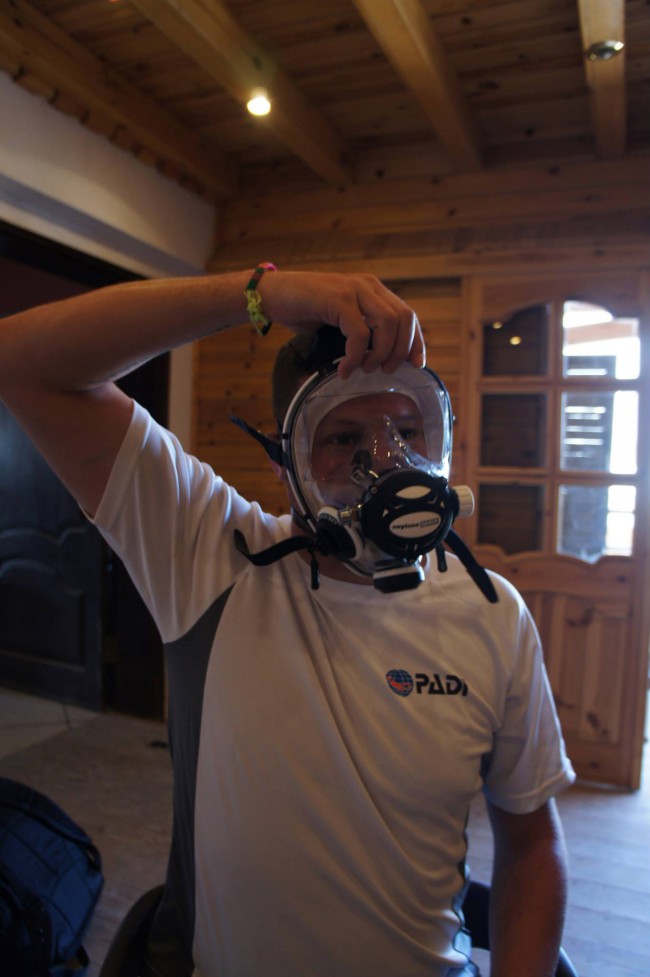
There are also three sets of straps that need to be fasten in a set sequence to get the best and most comfortable fit, getting this wrong is certainly noticeable. While on dry land and not connected to an air supply, the most important feature to learn about is the Surface Air Valve that allows you to breathe normally with the mask on.
With the set up now completed to our satisfaction we kitted up and headed into the water.
Diving and skills
My first impressions of the mask underwater were good, breathing is a lot easier and quieter, vision is amazing and most important of all no leaks. The early part of the dive was spent in shallow water to allow us to complete the required skills. First up, clearing the mask. The biggest consideration is that now the mask and breathing are one complete unit – unlike normal masks where you have your separate regulator. But, I actually found the hardest of this skill was breaking the seal of the mask to let in enough water. Clearing the mask was easy and very, very quick, just press the purge button and keep your eyes tight shut.
After a few repeats we moved on to the next skill, complete mask removal and replacement. Again, removing the mask means not just losing vision but also your air supply. After a few deep breaths I removed the mask using the quick release tabs, changed to my alternate air supply and spare mask. Easy enough, now back the other way. Using my thumbs as a guide along the mask straps, I returned the mask to my face, created a seal and pressed purge. A short blast of air and my mask is clear. Now, I can breath normally and see again. All that was left was to fine tune the strap adjustments and I was done.
Skills done, we now had two dives to a max of 18 metres/60 feet to complete the course. The dives were opportunities to get used to the full face diving mask and really enjoy the benefits. As mentioned above, the all round vision is amazing – you can see your buddy at your side with out having to turn your head. I saw a very large Napoleon fish in the top right of the mask that I would have missed with a normal mask. With the integrated communications system (more about this below) I was able to alert my buddies to it as well. Anyone who has been in a similar position of seeing something amazing and then not being able to get the attention of your buddies will know how cool this is.
So what advantages are there to full face masks?
In my experience, the distinct advantages are the much greater field of vision, the ease of breathing and ability to breathe through the nose. Biggest plus for me would be for cold water diving as it provides excellent coverage and protection against cold water and no more numb teeth!


Talking underwater
As an option, you can also have a communications system fitted to the OCEAN REEF full face mask, including a microphone inside the mask and an ear piece that is connected via the mask straps. Speaking underwater is a totally different proposition then having a conversation on land. There were a number of steps and rules to learn as part of underwater communication, which include:
- Pressing the button to begin transmitting. After hearing the activation beep, wait a few seconds before speaking.
- Speak slowly and pronounce your words carefully.
- Every communication should end with the word “over”.
Now this is harder then it seems, and bringing all the elements together to communicate in an understandable way takes concentration. I often found myself replying using good old fashioned hand signals out of habit and in some part as its easier just to throw the OK sign. I think this part of the FFM experience is more useful for mission specific communications.
Big Thanks to Aron Daníel Arngrímsson my instructor and all the guys at Team Blue Immersion an OCEAN REEF official international Training College for putting together the course at short notice and giving me the chance to be one of their first students to do the course.
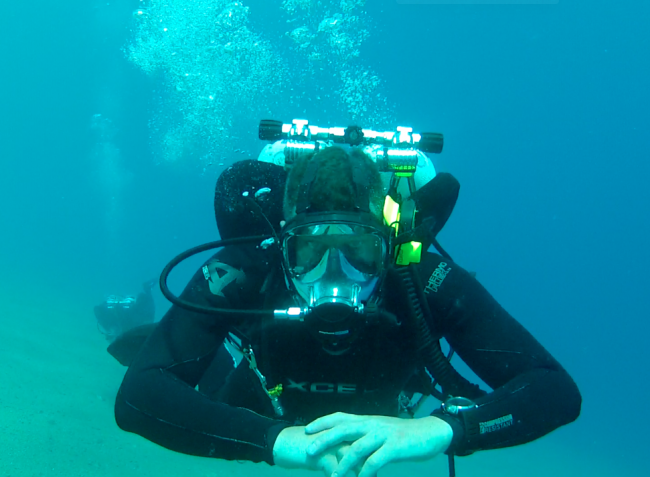
Ready To Master Using a Full Face Mask?
The Full Face Mask Diver course will teach you everything you need to know about using a full face mask. From properly preparing the mask for the dive to responding to out-of-gas emergency situations, you’ll have the skills, knowledge and confidence to dive with this versatile piece of dive gear.
